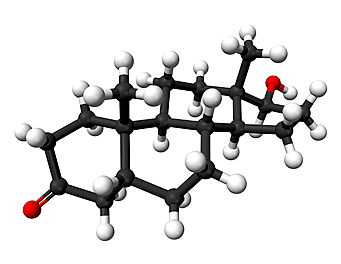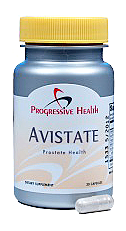Popular Articles
- Avistate Supplement Facts
- Super Beta Prostate - Is it a Scam?
- Prostavar - Review of Ingredients - Is it a Scam?
- Prostate Diet - 4 Foods to Avoid
- Having Difficulty Urinating?
- 10 Natural Prostate Treatments
- Bell Ezee Flow Tea - Review
- Vigamaxx Reviews - Is it a Scam?
- Prostate Health Supplements
- Prost-Rx Review
- More Articles ...
 Reasons for Prostate Gland EnlargementIn This Article
The enlargement of the prostate happens as men age and it is the root cause of prostate problems such as prostatitis, benign prostatic hyperplasia (BPH) and prostate cancer. Besides aging, there are other causes of prostate enlargement. This article discusses the factors that lead to the enlargement of the prostate gland and the different treatment options available for shrinking the prostate and addressing prostate problems.
What Causes Prostate Enlargement?Prostate enlargement can be quite bothersome for aging men. Although it is not life-threatening, its symptoms are often uncomfortable and painful. Besides the pain associated with prostate enlargement, prostate enlargement should be carefully monitored because it could transform into prostate cancer if the rapidly increasing prostate cell population turns malignant. Basically, the enlargement of the prostate occurs when epithelial and stromal cells in the prostate increase in number. This proliferation of prostatic cells can either be benign or malignant. The benign form of prostate enlargement is also known as benign prostatic hyperplasia (BPH) and benign prostatic hypertrophy. Malignant prostate enlargement is also known as prostate cancer. It is the second most common cancer in older men and a leading cause of death in the age group. However, most cases of prostate enlargement are benign and do not necessarily signal the onset of prostate cancer. Since the symptoms of both malignant and benign forms of prostate enlargement are identical, specific laboratory tests are required to differentiate between the two. Prostate enlargement occurs naturally with age and the prostate is believed to start growing late in puberty. At the age of 50, approximately 50% of men show some evidence of latent BPH while the percentage increases with age. Half of these men are also likely to develop BPH that will require medical attention. The major factors that are currently known to cause prostate enlargement are discussed below. AndrogensMost experts believe that androgens play a major role in the enlargement of the prostate. Although, rather than directly causing the condition, these male sex hormones sometimes play a permissive role. This suggests that they are required to be present for prostate enlargement to occur. One clear evidence to support the androgen-driven enlargement of the prostate is that castrated boys do not experience BPH even as they get older. In addition, injecting these boys with testosterone does not increase the risk of BPH.
In the prostate, as well as some other parts of the body, testosterone is converted to DHT through the action of the enzyme, 5α-reductase (type 2). Once synthesized, DHT binds to the androgen receptors found on prostate cells to act. Therefore, DHT is the main androgen in the prostate and it is essential for prostatic growth. Unlike testosterone, DHT dissociates slowly from androgen receptors. As a result, its action is more potent and longer-lasting. When DHT binds to these receptors, it induces cell growth and proliferation in the prostate. This is often what causes the enlargement of the prostate. With the knowledge of this mechanism, 5α-reductase inhibitors can be used to reduce the levels of DHT in the prostate by blocking the enzyme responsible for the conversion of testosterone to DHT. This therapeutic action reduces the size of an enlarged prostate and relieves the symptoms of BPH. EstrogenA number of recent studies indicate that estrogen can contribute to BPH. Although many of these studies agree that estrogen is indeed involved in the cellular processes that result in BPH, it is believed that it plays a less direct role in this process. In all likelihood, the presence of estrogen in the prostate is because androgens in the prostate tissue are converted to estrogen. This explains the reason why many studies have found inconsistent correlations between serum estrogen levels and BPH. A subtype of estrogen receptor (ERα) has been discovered to contribute to the proliferation of prostatic cells. This means that estrogen plays a role in the division and multiplication of cells in the prostate which, in turn, leads to enlargement of the prostate. A confirmation of the role of estrogen in the enlargement of the prostate comes from the observation that a selective estrogen receptor modulator that can regulate estrogen levels in the prostate was effective in the treatment of BPH in animal models. This drug was tested in transgenic mice with positive results and the findings were presented in the 2006 Society for Endocrinology medical conference in London. Lastly, some experts suggest that the contribution of estrogen to prostate enlargement involves the effect of the hormonal imbalance between estrogens and androgens in the prostates of older men. Lifestyle, Diet, and AgeAs already mentioned, age is a major causative factor of BPH. In fact, the prostate grows larger with age. Therefore, the risk of clinically significant BPH is higher in older men. In most men, the prostate begins to grow latently during puberty and may remain in a relatively small size until the age of 40. After the age of 40, the prostate begins another phase of growth which may signal the onset of BPH. However, symptoms of BPH do not often occur until men turn fifty and it may take longer in some other men. An increased risk of this condition has also been linked to lifestyle. For example, symptomatic BPH is more prevalent among men who live in urban areas compared to those who lead traditional or rural lifestyles.
Prepared and processed foods mostly eaten by city dwellers can cause prostate enlargement. Such foods include refined carbohydrates (soft drinks, candy, milk chocolate, enriched bread, and ice cream), trans fat, butter, and red meat. Lastly, the regular consumption of fluids such as alcohol, coffee and other beverages especially before bedtime can result in symptomatic BPH in older men. How is Prostate Enlargement Treated?There are many treatment options for BPH. Depending on the severity of the condition, treatment may range from simple medications to invasive surgeries. However, treatment options usually depend on a number of factors. One major factor to consider before choosing a treatment therapy is to determine how severe the symptoms are. Then the size of the prostate can also be considered. In some cases, treatment may be postponed as long as the symptoms are mild and tolerable. When treatment is being considered, the physician must determine what the best treatment options are especially where there are other health conditions present. Some of the treatment options for BPH are discussed below. MedicationsFor moderate symptoms, medications are usually recommended. They are the most common form of treatment therapy for BPH because they are non-invasive and usually recommended by physicians. Some of the medications commonly used for the treatment of BPH are: Alpha-blockersThese are medications that block α1-adrenergic receptors. These receptors are found in the smooth muscles around the neck of the bladder, urethral sphincter, and muscle fibers in the prostate. Therefore, alpha-blockers relax these sites to ease the flow of urine and relieve the symptoms of BPH especially difficulty urinating. This type of medications usually works fast and improvements can be observed in less than 2 days. Side effects associated with the use of alpha-blockers include weakness, nasal congestion, and orthostatic hypotension. It is also common to experience a harmless condition known as retrograde ejaculation when taking alpha-blockers. Retrograde ejaculation occurs when semen is drawn back into the bladder instead of coming out of the tip of the penis. Common alpha-blockers that are available over the counter include terazosin, doxazosin, tamsulosin, alfuzosin, and silodosin. 5-alpha reductase inhibitorsThese medications target androgen hormones in the prostate. Specifically, they inhibit 5α-reductase which is the enzyme responsible for the conversion of testosterone to DHT (the major androgen hormone responsible for increasing the size of the prostate). Unlike alpha-blockers, 5α-reductase inhibitors work slowly and it may take days to weeks before improvement can be observed. However, their therapeutic effects are cumulative and can last for a longer period of time. They are usually used by men with very large prostate. The 2 types of 5α-reductase inhibitors commonly sold are finasteride and dutasteride. Common side effects of 5α-reductase inhibitors include decreased sexual urge, erectile dysfunction, and retrograde ejaculation. Combination Drug TherapyUsing a combination of alpha-blockers and 5α-reductase inhibitors will have a greater effect on the prostate than just taking one of the two medications. The combination of these two types of medications can effectively slow BPH progression, relieve acute urinary retention and help patients avoid prostate surgery. Besides, the combination produces quick relief while also providing longer-lasting action. Combining alpha-blockers and 5α-reductase inhibitors will also result in the same side effects observed when using any one of the two medications. AntimuscarinicsThis type of medication can also be used singly or combined with other medications. Antimuscarinics relieve overactive bladder (one of the presentations of BPH) by reducing the effects of acetylcholine on the smooth muscles of the bladder. This relaxes the bladder and eases the flow of urine. Tolterodine is an example of an over the counter antimuscarinic medication. Minimally Invasive TherapyFor BPH patients who do not respond well to medications, minimally invasive therapy is a treatment option. These therapies are easier to perform than prostate surgeries. They are also less painful. Although they are recent developments in the treatment of prostate problems, these therapies are now the preferred treatment for quickly and effectively decreasing prostate volume and improving urinary flow in BPH patients. The major procedures under these treatment options are: Transurethral Microwave Thermotherapy (TUMT)This procedure was approved in 1996 by the FDA (Food and Drug Administration) in the US. It involves inserting a microwave antenna into the prostate region of the urethra. Through a control box, the antenna delivers microwave radiation to a specific target area of the prostate. This heats up the targeted prostate tissue and thus destroys it. To prevent unwanted damage to other parts of the urethra, the device simultaneously cools the surrounding areas of the prostate region while also heating up the targeted area. The procedure takes about 30 minutes to 1 hour and it is usually done only once for BPH patients with small prostates. Transurethral Needle Ablation (TUNA)This procedure works in similar ways to TUMT but differs in some ways. For example, TUNA delivers radiofrequency energy, unlike TUMT. In addition, the device used has a rigid scope similar to a cystoscope and armed with two protruding needles by its sides. When inserted into the urethra, the two needles pierce the prostate and deliver radiofrequency energy to heat up and destroy part of the prostate. In cases where the prostate is very large, more needles may be required to deliver more energy. Like TUMT, this procedure shrinks the prostate and reduces the symptoms of BPH. TUNA has fewer side effects (especially a reduced risk of erectile dysfunction) than TUMT. SurgerySurgery is usually the last option to be considered for the treatment of an enlarged prostate. It is mostly recommended for patients who have tried other treatment options to no avail. Although surgery is more complicated and may require being admitted to the hospital for a few days at least, it brings a more lasting solution to the symptoms of BPH. During surgery for BPH, the large prostate tissue which is resting against the urethra is carefully removed while the other parts are left intact. Common procedures for prostate surgery are discussed below. Transurethral Resection of the Prostate (TURP)This procedure for prostate surgery has been in use for some years. It is the most commonly used and even considered as the standard surgical procedure for reducing the size of enlarged prostates. TURP does not require any external incision. Instead, a device called a resectoscope is inserted through the penis into the prostate after giving anesthesia. Through the wire loop of the resectoscope, the enlarged and obstructing tissues are carefully removed piece by piece. To prevent excessive bleeding, the resectoscope is equipped with a valve which works together with the electrical loop to seal blood vessels. The procedure usually takes between 90 minutes to one hour but may require a short stay in the hospital. Retrograde ejaculation is also a side effect commonly associated with this form of procedure. Transurethral Incision of the Prostate (TUIP or TIP)Unlike TURP where a section of the prostate is removed, TUIP involves making a few incisions in the bladder neck (the junction between bladder and urethra) and the prostate. This widens the urethra and allows the free passage of urine. Basically, it follows the same procedure as TURP. TUIP is commonly done for BPH patients with small prostates. Open surgeryOpen surgery requires external incision and it is often considered when other procedures have been deemed unusable. Factors that may necessitate the intervention of open surgery in BPH patients include a very large prostate gland, damaged bladder which needs to be repaired or other complicated medical conditions. As with other open surgical procedures, the surgeon makes an incision after anesthesia has been given, then he reaches for the prostate and cut out the enlarged tissue. Open surgery usually requires an extended hospital stay and a few visits for checkups afterward. Laser surgeryLaser surgery was approved by the FDA in the US in 1996. Although it is less invasive than open surgery, it also requires anesthesia and a stay in the hospital. Laser surgery involves inserting a laser fiber into the urethra through a cystoscope. The laser fiber then delivers energy into the enlarged prostate which subsequently destroys parts of the prostate and shrinks the organ. Although this procedure causes a relatively small amount of blood loss, its effectiveness in the long-term is still not properly demonstrated. There are some other procedures that have been recently developed for the treatment of BPH but their safety and effectiveness are yet to be approved by many experts. Natural SupplementsNatural supplements are also available to treat prostate problems including prostate enlargement. These supplements include herbs, vitamins, minerals, and other natural products. Natural supplements act by the same mechanisms as the medications described above. They inhibit the conversion of testosterone to DHT, the binding of DHT to androgen receptors and the inflammation of prostate tissues. These natural supplements are just as effective as the standard prostate medications regularly recommended by doctors. In addition, they are safer, better tolerated and cause fewer side effects than these standard medications. The major herbs used in treating prostate problems are saw palmetto (Serenoa repens) berry extract, stinging nettle (Urtica dioica) root extract, and pygeum (Pygeum africanum) bark extract. Other effective plant extracts used include isoflavones from soy extracts and lycopene, a natural antioxidant found in tomatoes.
Other vitamins that have been proven useful in the treatment of prostate problems include beta-carotene, vitamins D, and K. While there are many natural supplements that can be used to treat prostate problems, it is best to find a natural prostate product that combines as many of these supplements as possible. One such effective combination of natural supplements is Avistate, an oral dietary supplement formulated with proven herbs, mineral, and plant extracts to help shrink the prostate, relieve the symptoms of BPH and reduce the risk of prostate cancer. Sourceshttp://www.nature.com/nrurol/journal/v8/n1/abs/nrurol.2010.207.html http://kidney.niddk.nih.gov/kudiseases/pubs/prostateenlargement/ http://www.mayoclinic.com/health/prostate-gland-enlargement/DS00027/DSECTION=treatments-and-drugs
[+] Show All
|
| Next Article: Lycopene and Prostate Health |





 Although testosterone is involved in the growth and development of the prostate, its action is minimal compared to that of its metabolite, dihydrotestosterone (DHT). In fact, various studies have found that many BPH patients have low serum
Although testosterone is involved in the growth and development of the prostate, its action is minimal compared to that of its metabolite, dihydrotestosterone (DHT). In fact, various studies have found that many BPH patients have low serum  This is supported by the fact that the
This is supported by the fact that the  Antioxidant minerals and vitamins such as selenium, vitamin C, and vitamin E can also complete
Antioxidant minerals and vitamins such as selenium, vitamin C, and vitamin E can also complete